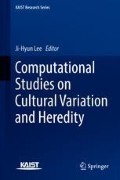Abstract
In this paper, we apply dichotomous aspects discussed in architectural theories to electronic devices and explore the relationship. In order to investigate the similarities and the differences between how people’s attitudes change for the sense of individuality-communality and private-public in a household environment and in a product environment as the level of depth increases, we designed an experiment with a scenario that guides subjects to explore through a household space virtually displayed on a large display as well as a smartphone space on an actual phone. At the end of every task, we asked the subjects to complete a semantic differential survey designed using the terms used in architecture that relate to both social and spatial dichotomies. From this experiment, we can suggest that the use of analogy between the two environments is appropriate especially as the depth of navigation increases such as going into a bedroom or accessing a picture folder and that social and spatial dichotomies examined in architectural and geological research fields do exist in a smartphone environment in a way it makes sense such as front and back. Lastly, we realized that while the household environment provided static feeling overall, the smartphone environment provided dynamic feeling.
Access this chapter
Tax calculation will be finalised at checkout
Purchases are for personal use only
References
Rechavi, T. B. (2009). A room for living: Private and public aspects in the experience of the living room. Journal of Environmental Psychology, 29(1), 133–143.
Ozaki, R., & Lewis, J. R. (2006). Boundaries and the meaning of social space: A study of Japanese house plans. Environment and Planning D: Society and Space, 24(1), 91–104.
Rapoport, A. (1990). Systems of activities and systems of settings. In S. Kent (Ed.), Domestic architecture and the use of space (pp. 9–20). Cambridge: Cambridge University Press.
H. Turgut, & A. I. Cahantimur. (2002). Tradition, change, and continuity: a dialectical analysis of social and spatial patterns in the home environment. In G. Moser, E. Pol, Y. Bernard, M. Bonnes, J. A. Corraliza, & V. Giuliani (Eds.), People, places, and sustainability (pp. 131–145). Hogrefe Publishing.
Seo, K. W. (2012). DNA of the house. Home Cultures, 9(1), 77–97.
Richins, M. L. (1994). Valuing things: The public and private meanings of possessions. Journal of Consumer Research, 21(3), 504–521.
Author information
Authors and Affiliations
Corresponding author
Editor information
Editors and Affiliations
Rights and permissions
Copyright information
© 2018 Springer Nature Singapore Pte Ltd.
About this chapter
Cite this chapter
Min, D.A., Kang, N., Rhim, J., Lee, JH. (2018). A Sense of Dichotomy in Household Space and Smartphone. In: Lee, JH. (eds) Computational Studies on Cultural Variation and Heredity. KAIST Research Series. Springer, Singapore. https://doi.org/10.1007/978-981-10-8189-7_8
Download citation
DOI: https://doi.org/10.1007/978-981-10-8189-7_8
Published:
Publisher Name: Springer, Singapore
Print ISBN: 978-981-10-8188-0
Online ISBN: 978-981-10-8189-7
eBook Packages: Computer ScienceComputer Science (R0)

